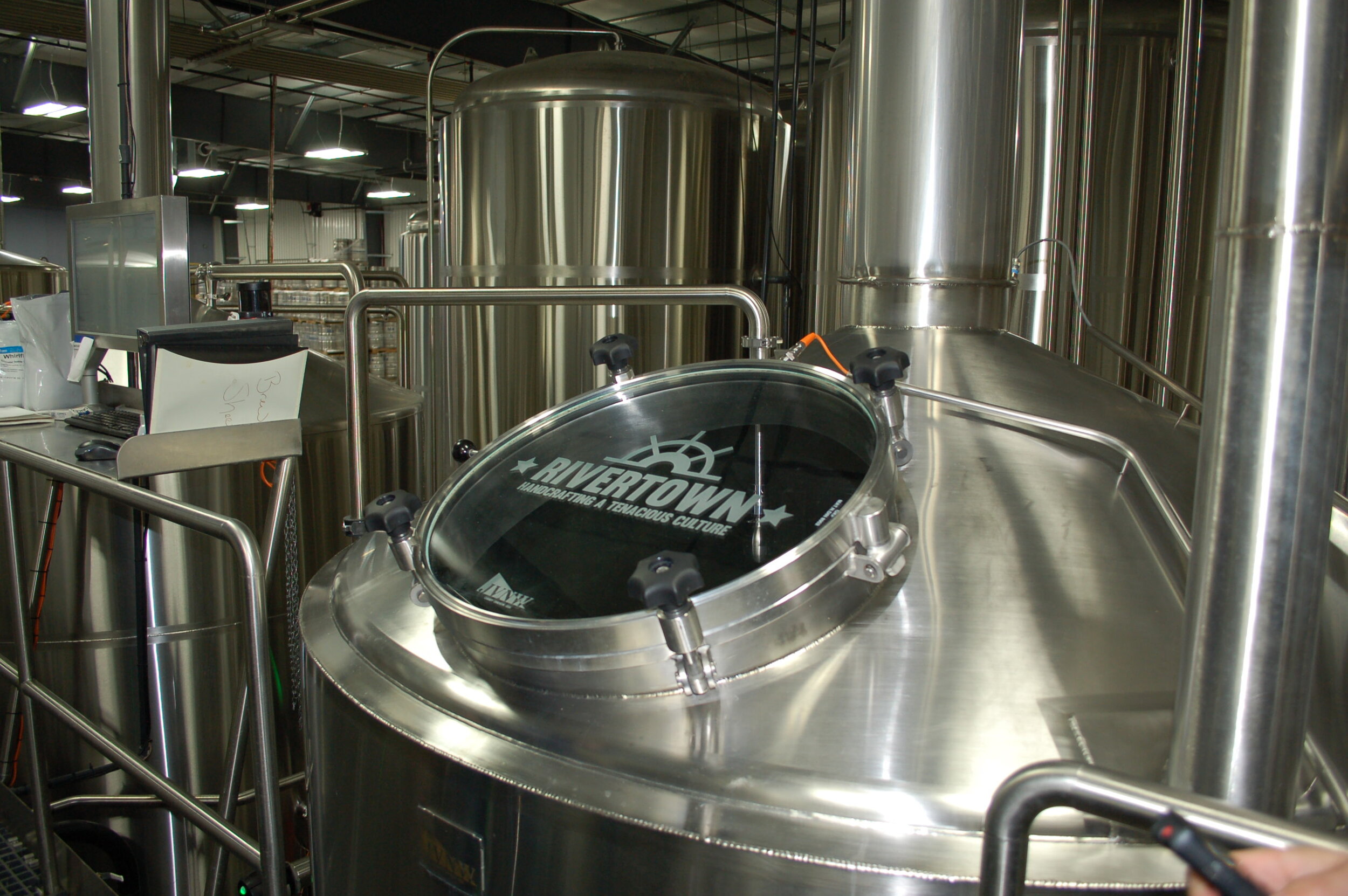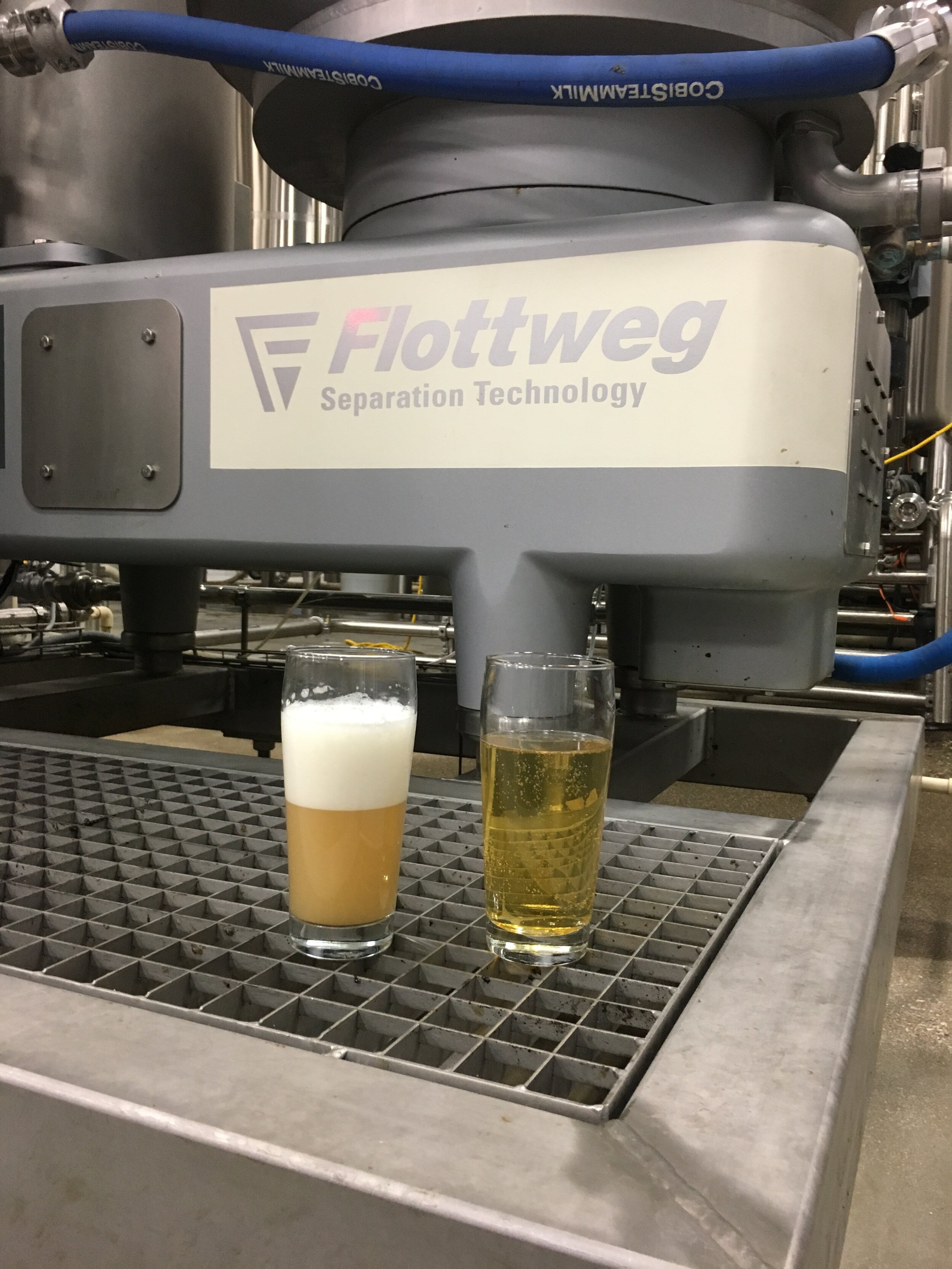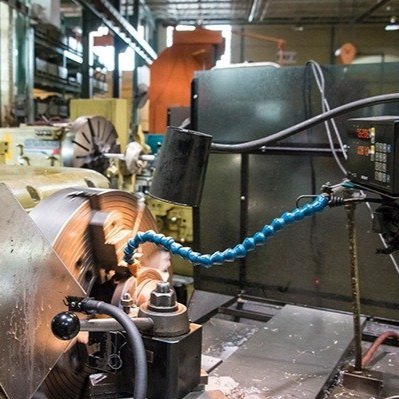Automation Used in Craft Beer Manufacturing Processes
/Automation and a focus on reliable processes are at the core of a craft beer business that grew from a hobby to a full-time pursuit in less than 10 years for Jason Roeper of Rivertown Brewery & Barrel House.
By Michelle Segrest, Navigate Content, Inc. - Reporting for Efficient Plant Magazine
Jason Roeper grew up watching and learning from his uncle, a hobbyist home brewer. The day he turned 21, Roeper went to his uncle’s house and brewed his first batch of beer. He honed his craft and, in 2007, submitted his unblended Elderberry Lambic, “Straight Up,” to the Sam Adams Longshot Competition. He was named a finalist, which inspired him to pursue his dream of becoming a craft-beer brewer.
In 2009, after being laid off from a corporate job, Roeper translated his longtime vision into a business plan and began the Rivertown Brewing Company in Lockland, Ohio. In 2017, he expanded to a larger space in Monroe, Ohio, and rebranded the business Rivertown Brewery & Barrel House, which now covers 31,000 sq. ft., including the manufacturing facility and a barbeque restaurant and pub. With a 417-barrel fleet, the company produces 28,000 barrels of beer in 28 flavor varieties annually, and distributes in 37 U.S. states.
“Everyone said I was crazy and told me I’d never make a business out of this. This was before craft beer really caught on,” he explained.
Roeper met with the local Small Business Administration and was told to rethink his idea of starting a beer pub. “I had no restaurant experience, so I couldn’t get support on that idea,” he said. “I just went right into production only. Back then, in Ohio you couldn’t have a tavern, but you could self distribute. We got launched into production, and rented a small 2,000-square-foot facility—I called it a shack. It was part of a commercial building with 20 different tenants. We signed on with a distributor pretty fast and then landed a deal with Kroger. This was the big launch. They told us we would have to service 30 stores. At the time I was thinking 30 stores? How are we going do this?”




Today, Rivertown Brewery & Barrel House sells its craft beers in 3,700 Kroger stores and to retail giants such as Costco, Walmart, and Aldi.
With the increase in business came growing pains. For Rivertown, having equipment that is easy to operate and maintain is critical. But the product quality must not suffer.
“We are too big to be small and too small to be big,” Roeper explained. “We can’t have three mechanics on staff and, of course, the problems always happen when the mechanics are not here.”
Automation Improves Production Efficiency for the Food & Beverage Processing Industry
One special challenge was finding the right separation technology. Rivertown was using a lenticular filter and allowing its settling process to happen in fermentation tanks. The newer, bigger brewery required much more throughput so Roeper could do some contract brewing.
“When we started Rivertown back in 2009, the first beers we produced we didn’t filter or separate or anything, and we found that the shelf-life stability was just not there,” Roeper explained. “We had limited budget and invested in plate-and-frame filter technology, which is basically like a giant coffee filter—you have press plates where beer flows through one side and various matter like yeast would get caught up in the microfiber. Depending on the batch, you would either get a very clear beer or a not-so-clear beer.”
The problem with this type of technology is that any type of cotton fiber tends to attract oxygen, which is a serious issue in beer brewing. The other issue is with sanitation. “Because we are using microfibers, different types of detergents and high temperatures [are required to] help combat pathogens and bacteria, but you can’t be 100% sure because there is no way to test the inside of a filter.”
Then he was introduced to a centrifuge technology that improved product quality and accelerated production.
“We realized quickly that it would pay us back in terms of efficiency and lowering overhead costs,” he said. “For starters, it helped with employee retention because it’s so simple to operate. It also helped with man hours because we didn’t need an employee to stand there and filter all day long.”
Speed and functionality were also important. “We wanted to be sure we could flow at a very specific rate, depending on the type of beer, and get the end results we wanted,” Roeper explained. “We also needed technology to support the fact that we have employees who need to multitask. The technology is there so we just set it and let it run. It’s very hands off.”
Clarifier separators are used to separate solids from liquids, thereby permitting highly efficient clarification.
“A propeller inside mixes the product, spinning 6,700 rpm, which is the speed of some airplane propellers,” Roeper said. “As the beer flows in, [the propeller] basically throws it against the sides of the bowl and you can see the beer in the other sight gauge as separated liquid. Hops, debris, and yeast are thrown out the side chamber and discharged.”
The operator can check the clarity at any time to make sure it is within specification. If it’s hazy, the system can re-route and send the liquid back through until the end goal is achieved.
“It’s important that this system allows us to deaerate the water,” Roeper continued. “This is an orbital sphere spinning at a very fast rate so anything you pump into it has the potential to pick up oxygen. We want to limit that as much as possible. We pump CO2 gas into the de-aerater. We bring in ground water and go through a filtration process, with the filter injecting CO2 to counteract the oxygen. Depending on the product, we can set the machine at different rates and intervals. Each product has a specific set up. It will detect ratings that vary from what has been entered in the system. The system will automatically adjust itself.”
Roeper explained that beer will naturally separate on its own, but it’s a very slow process. A high-capacity brewing operation needs technology that will speed the process. “A separator does not sterilize beer, it just removes the solids,” he said. “The difference between separation technology and filtering is that filtering can take things out of beer, but it also strips flavor. A separator takes out hop debris that is left in the fermenter. With a separator you can choose what gets through and what doesn’t.”
Roeper said that adding the centrifuge was a big game changer with regard to improving plant efficiency. “Without clarification, all beer would be cloudy and full of yeast,” he explained. “Some yeasts don’t taste good, and you have to get it out and find a way to consistently get it out and hit those same levels every time. Centrifuge technology for us was huge, because it allowed us to separate and run all day and speed up our production.
Automated Monitoring for Beer Processing
For a big operation with a small staff, the Rivertown Brewery & Barrel House depends on a smooth, remote process and advanced data collection to keep things running efficiently. “Brewing hasn’t always been this automated,” Roeper said. “Maybe in a [large-production facility] it is, but perhaps not in a place making craft beer. It’s not difficult to maintain the equipment, but it can be frustrating. Our equipment suppliers have their systems dialed in, and they are available to show up for service calls.”
Rivertown gained a significant boost in efficiency when it added an HMI (human-machine interface) to its brewing operations. “Each piece of equipment and each part of the process has its own automation incorporated to make things more efficient,” he said. “For example, our brew house is the heart of everything. Everything within it is connected to an HMI interface so that we can control the entire process. It’s constantly monitoring and collecting data. After brewing a batch, we can go back through the process and see when a valve was opened, what time that valve was opened, what recipe was being brewed, and how much water was used with each tank, among other things. Everything ties into one interface. Not only can the operator see it, but we can all see it from afar. We can tap into the system from anywhere in the world and see what’s going on.”
Being able to see the finer details is critical, especially when something goes wrong.
“Let’s say, for example, that the yield in the product came up 200 gallons short,” Roeper explained. “Before we had this interface, we would just be scratching our heads thinking, ‘How did this happen?’ We can now go back through the system and review the history of the batch to see when the valves were opened. We can see where perhaps an operator just missed something. A lot of these recipes are very set in routine. We make our base beers and they are consistent. But often, we make contract batches for parties and there may be a change in the recipe. The customer may want more water added or fewer hops. It’s not a programmable recipe, so there is room for human error. We have guidelines and a set procedure, but sometimes those things get missed. This interface helps us identify where something may have gone wrong.”
Before installing the automated technology in 2017, there was nothing to monitor the machine behavior. “In our old brew house, we had a smaller system that was operated manually,” Roeper said. “We had to open and close the valves manually. We couldn’t control the system from one platform. When we would add something in or move product from one vessel to the next, we would have to manually turn on a pump and manually open valves. There was a lot of potential for human error.”
The system allows any error to be identified to prevent it from happening again.
“It’s much more efficient to catch the errors as they are happening versus finding out after the fact,” he said. “This automation has really changed things for Rivertown.”
The brewery has also made technological advancements with its clean-in-place (CIP) process. At its original location, to clean equipment between batches, workers would mix chemicals on demand, pump them into a tank, then allow a pump to clean out the tank.
“We have a CIP system in place now that is all computer programmed and fully automated,” Roeper said. “We do spot checks and change filters. The lab will come out and run tests for us. We’ve only been regulated by the FDA for two years. Prior to that, the FDA did not get too involved with beer brewing because the alcohol will generally kill pathogens.”
When a batch is finished, cleaning takes place immediately. “We don’t let it sit,” he said. “If you ever go into a brewery and see them doing that, don’t drink their beer. We don’t sanitize. Cleaning and sanitizing are two different things. We use paracetic acid, which is very strong but only lasts about 24 hours.”
Embracing Brewery Change and Growth at Rivertown Brewery & Barrel House
Brewing has been around for thousands of years, Roeper said. “At the end of the day, the life for brewers is a little easier now with the equipment and technology advancements.”
When Roeper first opened Rivertown, there were no investors or operating money. “Some other breweries in the area were financed right out of the gate with endless amounts of cash,” he said. “Getting everything in place and learning to trust people was very challenging. We spent just shy of $8 million to get this brewery built and running. I started it and slept on the couch and often stayed up all night brewing beer, but now it’s truly a team effort. In the beginning I had no regular paycheck and had to eat what I killed. As I added employees, I traded in worrying about myself to worrying about more than 80 people. But the reward is making flavorful beer for the beer connoisseur.”
MORE ARTICLES ABOUT MANUFACTURING PROCESSES
Manufacturers Leverage IIoT Data
Drones Fly Beyond Inspections in Manufacturing Operations
Pilot Plants Remove Risk from Full-Scale Manufacturing Projects
Augmented Reality Accelerates Manufacturing Efficiency
Michelle Segrest is president of Navigate Content Inc. and has been a professional journalist for three decades. She specializes in creating content for the processing industries and has toured manufacturing facilities in more than 75 cities in six countries on three continents. If your facility has an interesting efficiency, maintenance, and/or reliability story to tell, please contact her at michelle@navigatecontent.com. Michelle Segrest is the author of three books on Modern Manufacturing.
If you like this article about Craft Beer Manufacturing Processes, please PIN IT!
This page contains affiliate links. If you click on the product links and make a purchase, it allows me to make a small commission at no extra cost to you! Thank you for your support and I hope you find value in this content!














